Note that this is an op-ed and mainly spurred by opinions. It’s also long, but this has been on my mind for a long time.
I’ve been on a book kick. One of my most recent reads was Entitled: Discriminating Taste and the Expansion of the Arts by Jennifer C. Lena. The fascinating text dives into how different structures (academics, legislation, the white, rich elite, etc) led to the “legitimization” and subsequent expansion of art in America.
In the early 1900s, this included things like American Opera and ballet, which had to compete with older, Euro-centric canons and modern dance respectively for their validation. But the title suggests, this also includes the expansion of what we consider to be art, which was a surprisingly hard journey for many “lesser’ disciplines. The book definitely functions as a critique as much as it is a history, poking holes in the Western Imperialism-based approach to legitimization, even if such practices did lead to the expansion of what we consider to be “artful”. In the case of “lesser” expressions (at least compared to older things like opera) such as comics, jazz, folk art, graffiti, and tattooing, this was essential for the public’s serious understanding of them. Lena’s thesis is that the legitimization of art is quite fluid and new, which means that we have the power to change this process for the better as time goes on.
One of the sections that stuck out to me was the function of discussion and critique within the legitimizations of art disciplines. The book maintains that such discourse was incredibly important in order to differentiate disciplines from profit-driven, functional objects and make them out to be discussed as art. Lena does make it out that legitimization can be both good and bad, since while this expansion of the arts has been great in terms of opening up what we consider to be art, it provides that much more room for elitism and potential gatekeeping. Much of the book is about the double-edged sword of Legitimization, which is why it takes care to point out the locus of power within legitimization and to highlight the efforts of allowing those within the “vernacular” to have a say in the conversations regarding newly canonized arts, rather than leaving it solely within the hands of the elite.

To bring it back to the blog, I know that Fashion as a Hobby is definitely far lower on the totem pole of “art” (you might even argue it doesn’t count at all). However, I’ve always considered it to be worthy of discussion, being much more than functional clothing, whether it be to not-be-naked or simply a trend we engage with to socially fit in. Obviously, this isn’t new as Fashion has always involved self-expression, but this is much more true today with the demise of dress codes and the increased use of social media (and therefore, posturing your expression).
So as I read Entitled (as well as other books on art and taste), it became clear to me that I’ve been obsessed with the “legitimization” of Classic Menswear as a Hobby, or for us to consider it at least as a form of fun personal expression rather than as a functional object. In other words, it is for the positive aspect of legitimization, in the hope that other people can see its merit and ultimately see their own agency in forming a new identity for what it means to be a “menswear enthusiast”.
I find this term better than evangelism, since legitimization (or validation, perhaps?) describes more what I’m about: making a strong case for this style that others can choose and look upon differently, in contrast to menswear’s pragmatic background. To be clear, this not about making wearing menswear considered a high art, though on that note, I’ve found a lot things to glean from the book, specifically comparing my efforts in the expansion of menswear to the history of the expansion of the arts in America.
I believe that my entire blog has been an exercise in that pursuit, perhaps not to the wider world (that’s a fool’s errand), but to peers and those in my immediate contexts who may not currently be menswear enthusiasts but are still poised to appreciate it. Whether or not you think it’s actually been fruitful is certainly up for debate. I’d argue that there are far better people than I that should be doing this with much more efficacy (there probably are, considering how saturated menswear media is)!

Now, the overall sentiment isn’t something entirely new to me. Over the past few years, I’ve grown interested in discussion and critique-based internet content, seeing it quite often (at least from what my algorithm and mutuals will show me). In most cases, such content highlights inequalities that have plagued the world and provide a different take than a capitalist or pragmatic point of view. In others, they are at least comical, pointing out patterns and funny quirks that characterize a movement or subgroup.
Creators like Contrapoints and Shaun immediately come to mind, being some of the major figures in BreadTube. I remember seeing them around when Trump (and Jordan Peterson) came to power. And since that was the first election I took part in, their style of content was quite influential to me, though it obviously didn’t factor into the stuff I did. Shows like Adam Ruins Everything and Last Week Tonight came later, bringing these type of long-form discussions and critiques (along with excellent due diligence) to a mainstream audience. I believe that all of this was bolstered by the global Pandemic, where the inadequate response from our government and employers showed all of the inherent inequalities we face on a daily basis. We learned not to accept things the way they are and at the very least we should find out why they happen and try to change it for the better. To me, these critiques were legitimized thanks to their discussion in media.
Now most of BreadTube tackles truly important societal topics, but I believe their popularity and prevalence have contributed to a lot of the smaller-scale critiques and long-form content that we’ve seen from amateur creators in other disciplines, namely fashion. Granted, not everything is meant to be a scholarly critique with studies and data, as this is more of an artistic discussion rather than a social policy one. However, these discussions do bring an air of Legitimacy to Fashion as a Hobby, turning fashion into an art-adjacent practice that still involves Expression (much like painting, writing, or music). We have definitely seen creators fancy themselves as cultural reporters or pseudo-philosophers (I mean both of these in a positive way) in their quest to Legitimize the Hobby, diving deeper into “why we do/like things” by applying, well, elements of philosophy or simply sharing their own observations as they navigate the space and their personal journeys.
This approach to content seems to characterize a lot of the new voices in online fashion media, specifically in the influencer space (though I know many of these guys have been into this hobby for a long time). Drew Joiner has talked about the Diderot Effect. Christian goes into the “levels” of fashion hobbyists (in a comical but still serious way). Tanner went viral for saying how we start to dress societally worse the deeper we get into aesthetics. Fashion Elitist talked about the ires of social media and monetized content. This movement definitely follows Entitled‘s case studies that show how intellectual discourse can help make a discipline be “legitimized” as art, high culture, or at least something that can be discussed as such.
I definitely see that happening here, as I do believe that fashion enthusiasts today are much more engaged with critical introspection (or at least just being critical in general) instead of just blindly following trends. It’s also quite interesting to see the effort into such content when there is a high temptation to post listicles or generic GRM content due to the easy reward (clout, sponsorships, etc).
Perhaps this reveals a growing sentiment that people are no longer satisfied with simple consumption, which tends to happen to more aware you are of culture and its mechanics. Cultural stagnation can breed introspection and curiosity. When you learn how people’s pursuit of status leads to cultural movements, it makes sense to go deeper to find out just how you connect with trends or specific clothes. Awareness of the environmental impact of our hobbies also plays a part, when we can see how a hobby can contribute to global wealth inequality, exploitation, and pollution. At the very least, it is good to understand why we like things and how we engage with them, so we can see what our own effect on the world is, what our status motivations are, and what we need to change for a more positive experience.
In other words, these creators’ efforts Legitimize the hobby of fashion, at least by making it more than just buying from a shopping list without question. There is more to it than simply being clothed or to just be on trend. In fact, many of these creators caution against blind participation/consumption.
Overall, it’s nice to see the practice and encouragement of introspection instead of contributing to the existing pragmatic hegemony where people still see clothes as functional or at least in pursuit of traditional status benefits. Granted, this still exists through recommendations, listicles, and most capsule wardrobe-based content as well as the thematically related pick-up-artist and hustle culture vibes. This will always be hard to shake as social media has been poised to be monetized and most people’s participation in it is predicated on acquiring traditional social benefits. After all, Entitled does posit that the profit-seeking qualities of the arts can often act as an obstacle to their legitimization.
As stated earlier, I believe Menswear as a Hobby deserves positive and inclusive legitimization, especially considering the fact that it is a “dying” fashion choice. Today may seem like the Best Time for Fashion, but people tend to not choose classic menswear as a viable mode of expression. I personally believe that this is reflective of the bountiful modes of dress that are now acceptable to wear in the world. Classic menswear needs to compete favorable with such things, which is a tough hill to climb due to a myriad of [valid] apprehensions. At the very least, menswear should have a strong case to dispel those anxieties in the modern day. That is why I believe that the best method of legitimization is done through critical discussions of identity and expression. After all, I certainly find looking at menswear and its culture through this critical eye a very compelling topic.
Unfortunately, most of the critical discourse fails as it tends to focus on what I perceive to be shallow, low-hanging fruit. One of them is price.

To be clear, I do believe that it is quite unfortunate that most of menswear is priced high and continues to be a luxury. This is a very real barrier to entry not just to wear the necessary clothing for the conservative dress codes that still exist (finance, law, weddings etc) but to even engage with it as a hobby. Like most things we consume, participation in the world of menswear to the degrees of all enthusiasts is a big privilege and it is good that we look at it. But that doesn’t stop critiquing price to be a shallow place to start from.
It’s almost as if people saw the Luxxoticca episode of Adam Ruins Everything and simply assumes that anything expensive is priced high for the sake of profit and monopoly. To be clear, brands indeed do some pretty shady stuff. Intentionally invoked scarcity in streetwear and watches is a way to maintain status and avoid dreaded brand dilution. But this should not be used as a blanket view; not everything expensive follows the same practices. And using Econ 101 theories on commodities and demand does not translate to all forms of fashion.
For most of “indie” classic menswear (aka not mall brands), prices are high because that’s simply what it appropriately costs. A lot of work goes into creating tailoring with specific details, work that you wouldn’t normally find on a tee shirt or regular ol pair of chinos. These details are what make the garment, like the spearpoint collar on a 30s style shirt, the soft rolls of an OCBD, the high rise of a good trouser, and the untipped blade of a tie. And when you have these details, it only makes sense to match them with quality, non-plastic materials and good labor all of which definitely come with a cost far above what we expect to pay at the mall.
Capitalism tends to focus on the path of least resistance that simultaneously provides the most profit. For most people, a suit is a suit, even if it doesn’t have a high rise, full leg, or a 3-roll-2 buttoning point. You might assume that these details are easy to swap in, but hey if its not broken don’t fix it; there is no profit to be made in bringing back the details we like. These details are found by indie brands where the work involved comes at a higher cost, much like selvedge denim, actually good cashmere, or hand padded lapels.
Derek has a good Twitter thread on this, but the basic idea is that the more specific or niche you get, like if you want a type lapel/shoulder types, quirky workwear/milsurp details, or a type of construction, the more expensive the garment will be since it is not something commonly or easily done in the modern day.


This gets even more apparent when we look at when we start looking at artisanal clothing. Workers in bespoke have said that they wouldn’t even be able to afford their own clothing if they considered what they actually made per hour of work. Their tight client lists and long wait times may contribute to their notoriety and “elite” status among menswear enthusiasts but the reality is that this is meant to preserve bandwidth and ultimately quality of work. High prices tend to go toward paying staff and exorbitant rent fees. It would be a fallacy just to think that these things have a high price just for profit. I’m sure that some brands might do this (if they have dubious or vague supply details), but this certainly isn’t the case across the entirety of classic menswear, especially when you move away from luxury and look toward artisan or independent brands.
When you start to consider the labor and materials involved in making certain favorite garments of menswear, it is any wonder that we are even able to get the clothes we have now. Outside of vintage, everything should cost more if we are aiming toward a more sustainable and ethical clothing industry; it is not a simple solution just to make things cheaper. All of this reminds me of when Ben Shapiro called AOC a hypocrite for having a $58 sweatshirt. I do find the sweatshirt cringey as hell, but she does do a good job in pointing out that this is just the price for a MiUSA product. Assuming that cheap prices (and cheap clothing) are the way forward ignores the real problems with fast fashion.
To be fair, I can see the merit of what these arguments are trying to do. A critique about price is noble in its efforts of striving for an egalitarian opportunity for others to partake in this subculture. I also want everyone to enjoy quality, well designed menswear. But don’t get me wrong; I do not believe to take things as they are and accept that quality menswear should remain inaccessible for large groups of people. One of the real concerns we should be talking about is how we aren’t being paid enough to properly compensate other people for the labor they put into our clothes. And I heavily dislike the implication that things are priced high simply for profit, when that isn’t the case across a lot of products (least of all menswear). Pushing the price downwards for the sake of price only furthers the use of shoddy materials and upholds unethical labor.
Focusing too much on the price of clothing is almost antithetical to such efforts because this presumes that it is the only reason why people aren’t in suits and ties all the time. Menswear is not a commodity; it is not the same thing as the real problem regarding the rise of people getting stuck in renting and the steep decline of home ownership. This focus on price also reinforces the view that menswear should be considered “proper” thing to wear, which is toxic because this position leaves no room for (and often shits on) other valid forms of expression. If we ever want people to take menswear seriously and look at it favorably, we can’t just focus on price.
Because when we look deeper, we learn that despite menswear’s classist past and how expensive the good stuff can be, the fact remains that it is also easier than ever before to get into classic menswear as a hobby. We need to look at what can bolster this choice.

People, now more than ever, want and are able to spend money on clothes.
After all, there is more clothing available, whether it’s new or vintage, artisan or fast, good and bad. As a result, the demographic of those getting into it is now younger than ever before. According to BOF, fashion spend outpaces video games, music, and food. Adults aren’t the only ones with agency over dress; kids can have style too..and in multiple genres and expressions. The demise of dress codes came with the freedom to wear clothes as we please, making participation optional (which is unprecedented). And when given the option, they prefer to spend money directly at retailers for hype pieces or collabs or going to the second hand market by buying from resellers or archivists. It’s clear that the high price of good ties was not the only reason why people don’t wear them. Those that have agency simply choose to not wear classic menswear. Or at least that was the case for a long time.
We’ve seen a new interest in menswear, specifically an updated take on ivy-prep as well as a resurgence in vintage Americana. To be clear, this is not based in some traditionalist revival or a return to occasion but rather due to a democratization of aesthetics– and the ideas of classic menswear were ripe for subversion and re-contextualization. New generations are finding what they enjoy about straight leg jeans, jungle jackets, and big suits through a more modern lens; they are finding their own relationships with these clothes and acting on it. The high prices turn into more of an investment, where converts want to participate only when they know its right for them– and when they know they will wear it for a long time.
The best designers and brands in the space know that clothes are connected to the self. Ralph Lauren did it through aspirational editorials and lookbooks. Now we’re seeing an expanded version, where even the styling of classic menswear feels more casual or at the very least, accessible for the lifestyles of the new generation who no longer abide by strict corporate dress codes (if they are lucky). Collabs are being done who help tie heritage and artisanal clothing to the brands that the new generation loves; stalwart brands are even doing their own vintage inspired lines and releasing their own archives. And while some of the executions can also be cringe in a “hello fellow kids” way, you can’t deny that it has seen a bit of success. I’ve seen countless new tailoring converts come from a Drake’s x ALD collab or diving deeper into prep after seeing Noah or Rowing Blazers. Everyone finds their way in somehow, and it usually isn’t due to adhering to tradition.

As you can expect, there are many menswear armchair critics that take issue with this. I don’t blame them for cringing, but there is quite a bit of sentiment from these people that these actions will actually “ruin” menswear. Most of the time its because they think that such actions are beneath the heritage brand, sullying their good name in the sake of profit. Again, this is a horrible way to legitimize the style, as it invokes a very shallow view of clothing and contributes to outdated, elitist perceptions of menswear. Laura Arnold greatly rebutted a few of these critiques on her blog Reaper Sower, published when Todd Snyder did a collaboration with J. Press.
These armchair critics also go after the new generation, calling them shallow for being into this just because its currently trending. And while that may be true (who knows how long this ivy-prep mood thing will last), it does seem odd to start being antagonistic to new fans. There is a tendency to call everyone a sheep, which I think is due to the fact that we see authenticity as needing to be individualized originality rather than a quality that can bring a community together (Tanner has a good tiktok about this). While authenticity is fascinating and diving deep helps us figure out our relationship to clothes, most of the critics Tanner and I refer too tend to simply be mean spirited, with their critiques meant to point fingers and do a “gotcha” to people without providing any solutions.
This pickiness over how people are introduced and get into to classic menswear in the modern world follows the same issue with making price the only focus of their critiques: it leans too far into saying that there is a “right” way to get into it. I know that they mean well, as they simply want holistic participation that is rooted on a tangible experience rather than one based on trends as well as the the fleeting and abstract internet experience. But things are different now. Someone can get into ivy and not have any connections to the East Coast. We can’t help how people see and get excited about clothing. It’s also important to realize that tangibility can take many forms today and that the internet can definitely lead to tangible encounters. Such takes time and encouragement, two things that people seem to not have anymore on the internet.
To be clear, I do think that discussing the politics of price and social media are important. They need to be discussed in order for us to have a deeper relationship to clothes that moves past being pragmatic or too trend-focused. That being said, I also think that focusing too hard on those specific topics and shaming other people is not a good form of evangelism if you are at all concerned with the future of menswear. If people can’t relate and find some expressive-camaraderie within the style, it will never be legitimized as a style, being relegated only to occasions (weddings, job interviews) and institutions (corporate dress codes) that are becoming less casual (i.e, less menswear oriented) as the years go on.
That’s why we need to look deeper and get at the “why” behind getting dressed.
Going this deep may seem absurd and unproductive (it is vague and subjective after all), but I believe it is the most important thing when discussing menswear.
This is because the relationship between clothing and self expression is inherently tied to the trends we engage with, how we find community, and ultimately what we perceive to be worth the money we spend. For years, this was easy to do with non-trad clothing, as people invoked casual or designer clothing to express themselves; tailoring was meant to resign yourself to the occasion, stick with anonymity, and see yourself as above the trends. But this gets harder as menswear joins the annals of fashion aesthetics you can partake in for fun. W. David Marx said on his Blamo! interview that it is easier to trace the movement of ivy and Americana in Japan since it was relatively new for them. For us Stateside, figuring our our connection to clothing and how they shape identity expression is much more complicated.
With classic menswear (tailoring, ivy-trad, etc) for years as being seen as the “proper” way of dress is incredibly toxic, meant to not only separate societal classes but Westerners (or whites) from “the others”; in order to be taken seriously/get a job/eat at a restaurant, you must wear a suit and tie. But this is no longer the case. You can largely wear anything you want to go almost anywhere you want or do whatever you want. Classic menswear has become like any other fashion aesthetic that we can opt into at our leisure instead of being the standard expectation, creating its own culture in the process. If we want to be concerned with how new generations to develop an interest in tailoring (and we should since the aforementioned armchair menswear critics can be quite toxic), it is imperative to introspect on these experiences and reflect on what gets us to choose and engage with our preferred clothing.
It is easy to say that sharing and wearing traditional classic menswear upholds elitist toxically-masculine ideals, which is honestly easy to see through the aforementioned PUA and hustle content. But this may not always be the case. This cultural shift and democratization is interesting in that it may or may not uphold its roots of Western supremacy, turning conversations regarding classic menswear’s “demise” and “resurgence” into a much more a complicated one.
How do we feel about aesthetics like “Coastal Grandma” and “Old Money” when all of the reference points are white? Is getting into yuppie attire upholding the prevalence of white corporate America? Is it good or bad that men can now show up to dinner in ripped jeans instead of a suit? While these may sound like silly questions, I think it’s important, especially when you start to dive deeper and think about who is wearing the clothing in such scenarios.
I believe it ultimately becomes about punching up vs. punching down, especially where much of the tastemakers, designers, and overall enthusiasts of classic menswear are now the vernacular or “folk” (enthusiasts), compared to traditional hegemony of elites (corporate guys, industry insiders, WASPs).

This is best exemplified we look at how marginalized people have adopted classic menswear, the historical dress of their oppressors, into their own story. Graham Marsh and Jason Jules get at this very idea with their book Black Ivy, which shares a multitude of stories and photos of the different ways Black Americans have worn Ivy during their fought for equality. Their act of wearing menswear was more than just donning uniform of the white man but rather the dilute the white history of menswear and show that Black people have just as much to say with their clothes. And now as classic menswear and ivy have become fashion aesthetics rather than overt class signifiers, the power to choose elements of ivy is unprecedented, which has been obviously been a positive thing for many individuals. A lot of the top designers and wearers of ivy today are black, which adds much-needed threads to the predominately white tapestry of classic menswear.
Menswear and its history with gender is no different. There are plenty of women who like menswear as an appreciation for details and silhouettes. I’ve also seen queer people on Tiktok and Reddit want to uphold menswear tropes through vintage details and workwear/milsurp/western wear in order to accurately express their gender identity. Many of them run into problems. And to be clear, menswear is not only about wearing the clothes but about community and the industry, which all together can make for a disheartening experience . This has been shared by Laura on her blog as well as Sarmilla, who before she interviewed me on her pod MenSwear by a Woman, shared a few awful stories about being a BIPOC woman tailor/designer in the space.
It’s quite clear that despite all the inclusive progress menswear has had, it is still not a simple task for some people to just wear a suit. The act of wearing clothes simultaneously comes with a history and a present meaning for current enthusiasts. Whether we like it or not, clothing is coded thanks to its expressive properties rooted in contour (physical resemblance) and convention (cultural roots). Sometimes this is bad and a marker of class; for others its a medium for empowerment, something to uphold while punching up in order to accurately express yourself. Navigating through all of this while still choosing to wear any facet of menswear comes with great introspection and invites us to figure out what factors are at play with our identity. These people, their individual expressions, and the stories they share are what truly legitimize menswear as a style for others to adopt of their own volition, rather than it being nothing more than a uniform they don’t care about.

I am very aware that as a cishet man, I have much more privileged experience with clothing. And so while I am concerned with legitimizing menswear as a viable, fun mode of dress, I know that sharing my experience does not do much in that goal. But that being said, I don’t believe that gives me an excuse to keep my thoughts shallow. Thanks to different discussions with friends and mutuals, as well as seeing the rise of introspection from other creators (and the people who love to start debates with me in DMs), I’ve also begun to dive deeper and figure out my own relationship to menswear and what it means to me.
I’ve obviously made comparisons between my enjoyment of classic menswear and other forms of expression, like the appreciation of indie/designer clothing as well as expression in the arts in general. Entitled even cites comparisons to other existing forms of arts as a natural occurrence of Legitimization, such as when Stieglitz compares his photography of clouds to symphonies or when Weston said, “Whenever I can feel a Bach fugue in my work, I know I have arrived”. My efforts are much more absurd, nonsensical, and much more juvenile but it’s my hope that this in some way helps legitimize menswear, at least to those in my immediate circles as well as the few people who actually care to read my blog. I doubt that it will ever be on the same page as more established forms of expressive fashion, but I can try my best!
One of the biggest examples of this was the Asian American article where my friends and I reflected on how we even got into this in the first place, seeing as there wasn’t much in the way of IRL inspiration nor there much representation in advertisements and menswear personalities (at least in America). But as I continued on, I realized that ethnicity is just one aspect of my identity and that there are plenty of factors at play whenever I get dressed.
How does an interest in menswear play with potential (or implied) career or social aspirations? What does it mean to dress against your own contexts? How important is community and how does my community or context respond to my clothing? What about my perceptions on what is formal vs. casual? Am I aware of its effect on other people? Am I okay with that? How do I feel about the history of such clothing? How do these connotations change when I (or someone similar to me) wear them? For example, am I upholding imperialism by wearing a Barbour with trad clothing? Or does it have a different meaning and expression due to my race, age, and status? How are these preconceptions formed? Can they be altered?
All of these thought starters are inextricably linked to why I have made the conscious choice to dress the way I do and have helped me realize what my priorities are. They’ve revealed how I view consumption, social media, and trends. I may not be correct, but they have at least lead to various blog posts over the past three years regarding POV, Authenticity, practicality, Standing Out, and expression. The politics and ethical consumption angle is also what led to our discussions with Yung Chomsky about menswear and leftism.
I keep these topics firmly in my mind every time I put on clothes. Sometimes its just for me and my expression, worn to work from home and maybe run an errand. But I also like when I get to interact with others, whether its menswear friends, non-fashion friends, and random people at the bar. My relationship to menswear is built upon all of these interactions, taking into account its storied past, the cultural mix of the present, and my own contexts. And in most cases, this introspection helps me dip into different tropes of menswear with relative ease while staying authentic to myself. In other words, I searched for why I found menswear legitimate, despite there being many reasons not to get into it.
Most of this is due to the fact that when I grew up, I was never a part of “historically” menswear groups nor did my social groups have a defined clothing style (by which I mean a focus on being fashionable). Outside of church, suits and ties were seldom seen. My friends were often not “presentable” and we had no external rules to adhere to, at least in the way of classic menswear. On that note, I’m actually quite lucky to have friends who actually encourage this amount of self introspection as we are always concerned with how we connect with things and express who we are. It’s resulted in a very intentional and confident approach to wearing what is pretty much traditionally white clothing.
That being said, there are a lot of things about menswear that I still wonder about. Is a purely consistent style is possible when you find yourself connecting with many things (a very polyamory vs. monogamy adjacent discussion lol). Why is it that dominant menswear culture tend to be made up of industry people rather than everyday enthusiasts? Is it possible at all to take the ivy-esque design elements usually found vintage or bespoke and bring them to more affordable brands or is Spier the only way to do it? If not, does this mean that the mall is doomed to have 2 button jackets with low buttoning forever? Does this mean that designs are locked into financial strata? Should we be okay with low/accessibly priced things even if they lack the details that make a look, a look? If that’s the case, then is menswear about “dressing up” or being “formal” instead of the details that create subcultures (trad, rugged ivy, corporate, workwear, etc).
On a silly note, has Tiktok and Edgy Albert reshaped the new generation’s view of classic [but largely casual] menswear forever? And to flip it to be more serious: does the rise of influencers and hustle culture within the classic menswear space help with its legitimization or does it simply uphold that wearing menswear is forever connected to capitalism and selling clothes? Is there a way for menswear media to talk about those who wear menswear without being directly connected to the industry?
These additional discussion points make me wonder if I am also being kind in my efforts. Am I upholding some “perfect” view of menswear? Obviously, I have my preferences, but are they preferences that anyone can get into or are they meant to lock out people? Is there a better way to talk about taste that is inviting to others? As I incorporate other influences to my style, are there methods I can take to ensure that my actions are thoughtful, authentic, and are actions of appreciation rather than appropriating? Am I punching up or punching down?
All of these things are meant to keep me grounded with how others become aware of menswear, how they form their perceptions of it, and their ultimate decisions to partake in it or not. With menswear becoming one of many choices for fashion enthusiasts, we should concern ourselves about these topics when we wonder why they don’t make that choice.
You may think that these topics are useless or even banal (it’s just clothes after all). I mean who even needs Menswear to be “legitimate” in the first place? However, I’ve found that this topic has led to many interesting conversations with friends, mutuals, and even strangers. Since classic menswear is an intentional choice rather than a required one, it’s only natural that discussions on wearing it involve general questions of identity, expression, and social priority; it isn’t as simple as price or simply following what is trending (in a sense). This is menswear’s opportunity to be legitimized as more than just corporate or wedding attire. And we can always take an active part in its future.
The funny thing is how much this whole blog post reminds me of conversations on poptimism, where efforts are made to use high culture discourse when talking about pop music. In some cases, this is good in order to expand taste and promote critical discussion. This can also lead to extremes in reverse snobbery, where we uphold pop music and give it a free pass from critiques overall. W. David Marx, the writer of Status & Culture, has connected poptimism to the rise of commerce as art. It is here that the similarities of art/culture conversations and menswear arise.
Classic menswear is not only fashion’s lingua franca for life’s situations, but it used to be the standard way of dressing. With the combination of art and fashion as well as the rise of the fashion aestheticization of clothing (aka “cores”) menswear becomes a subject for cultural discourse just as much as designer clothing or streetwear. Some people are opposed to this, citing that menswear should remain just lingua franca and not fashion, presumably in an attempt to keep it “pure”. We also have a bit of reverse-snobbery in the other camp, where people like to uphold anyone in a suit simply because its “classic menswear”; of course, this tends to uphold fast fashion/cheap clothes and outdated ideas, as I previously discussed.
Obviously this is all different from the poptimism debate. I’m stuck in the “middle”, advocating for menswear to be a fun hobby that you can take seriously, almost like art or high culture but in your own personal way. Even though I find myself in exhaustive debates (and writing nonsense blog posts), I think it’s worthy discuss these things because it all gets at the why behind getting dressed and the different ways people answer that question for themselves.
These discussions aren’t even necessarily meant to promote menswear specifically but to simply invoke introspection on why we get dressed. In other words, it’s meant to legitimize the act of fashion as a hobby overall, a fight that is still being fought as we speak. Menswear is simply one of many options that may or may not fit your expressive needs. I just want to make a good case for it, a case that tries to be as fully informed as possible and leaves space for discussion with other people’s approaches. At least when fashion enthusiasts (AKA not people who don’t like fashion at all are concerned, it is never just a simple act of putting on clothes. It is an intentional choice to express yourself. Legitimization serves to encourage a deeper relationship with clothes and have as much self-awareness as possible. We don’t need to simply take things for face value!
It actually helps that classic menswear has been around for a long time, as it allows us reflect on its historic meanings and how it affects the various people and identities that consider adopting it as their style. We can’t really do that with newer subgroups, at least not yet. And I’ve also noticed that the ones who tend to discuss menswear in this deep way tend to have similar contexts and approaches in life. This results in how free we are to play with menswear. Such people are able to have an open minded and self critical view of menswear that allows them to take pieces that they resonate with, even if they may not have naturally been apart of it or if its stereotypically incongruous with their current context. It may not be perfect, as we are always subject to trends and FOMO, but it helps to build a deeper understanding of our relationship to clothes and try our best to now be shallow.
Those critiques are important to think about, but its imperative that such discussions come from the right place. It makes no sense to be critical for the sake of being critical and shame others without proper discussion (unless you just want to be a dick). It’s my personal belief that comments like this are why people choose not to get into menswear. All of these shallow critiques only uphold the “right” idea of menswear, making it just as elitist as ever before.
The shame they illicit upholds the current hegemony reserving the “right” menswear to a certain class of person: the ones whose lifestyle makes the most “sense” for it and treats it with “respect”. Just think of the zealots who mock others for using the term”OCBD” when “true” menswear guys would simply say the full name of “oxford cloth button down”. All of this implies the false notion that there are people who deserve to wear menswear and it is wasted on the “others” they deem not worthy. It’s no wonder that fashion enthusiasts find other groups and styles that are more accepting and provide room for expression.
Menswear will find legitimization in fashion circles through encouragement and community, not by shaming others for using the internet, complaining about price, or distaste in thirst trapping Zoomers wearing your beloved chamois shirts and pleated khakis. If we really want to bolster the ones who may actually be interested in it and see if this style (and the clothes) will “survive”, we need to discuss it in a productive way and highlight what is actually driving menswear’s cultural movements. If we want to legitimize menswear and keep it open for the “folk” who actively shape it, we must talk about in a self aware and earnest way. After all, other subgroups of fashion are able to have conversations without getting as pissy, elitist, and “gotcha” hungry as menswear.
Why can’t we do that?
[Of course, I’m out of my depth at this point. I’m sure there are plenty of guys out there who will make a better future for menswear in a much more educated (and concise) way. But I’ll always continue writing the only way I know how.]
Recommended Reading
- I really recommend Entitled.
- PTO: Is it Classist To Be Against Fast Fashion
- Our old “pal” Berekely Breathes has written menswear criticism:

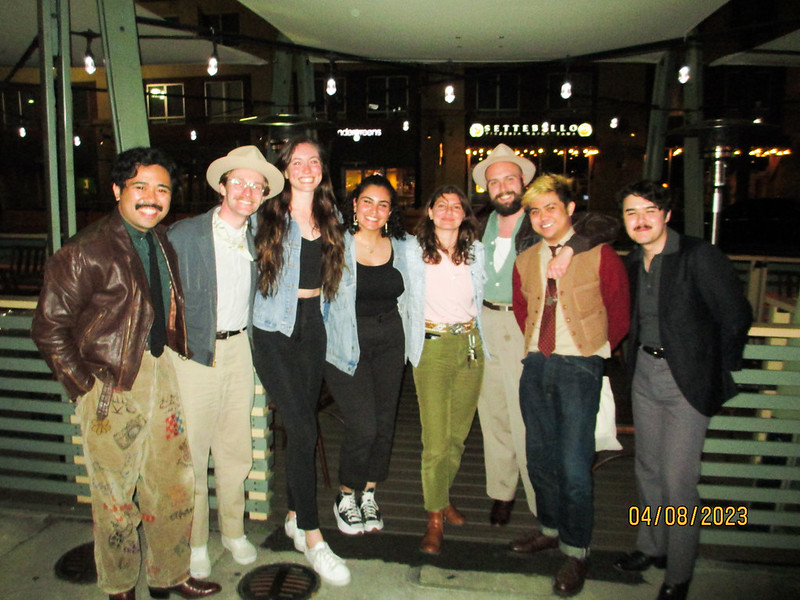










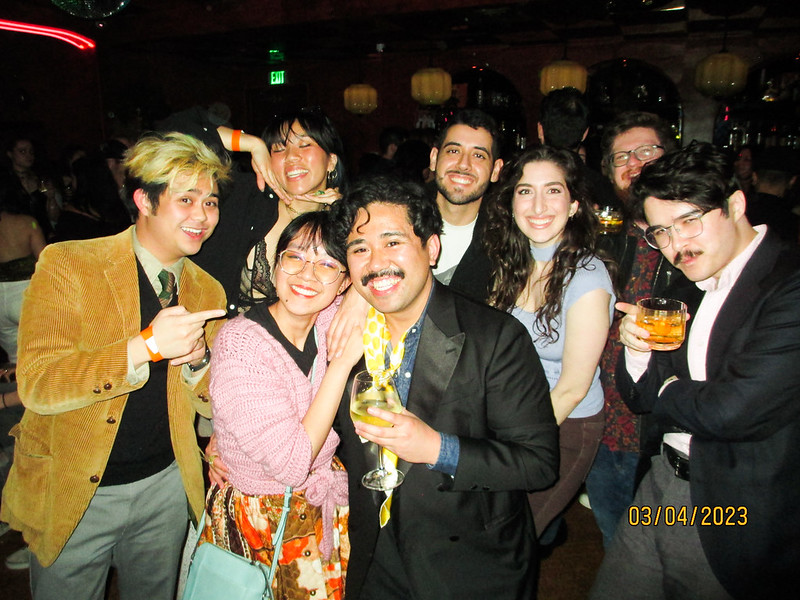
Thanks for reading! Don’t forget that you can support me (or the podcast) on Patreon to get some extra content and access to our exclusive Discord.
Always a pleasure,
Big thank you to our top tier Patrons (the SaDCast Fanatics): Austin, Philip, Shane, Jarek, Henrik, and Alexander.

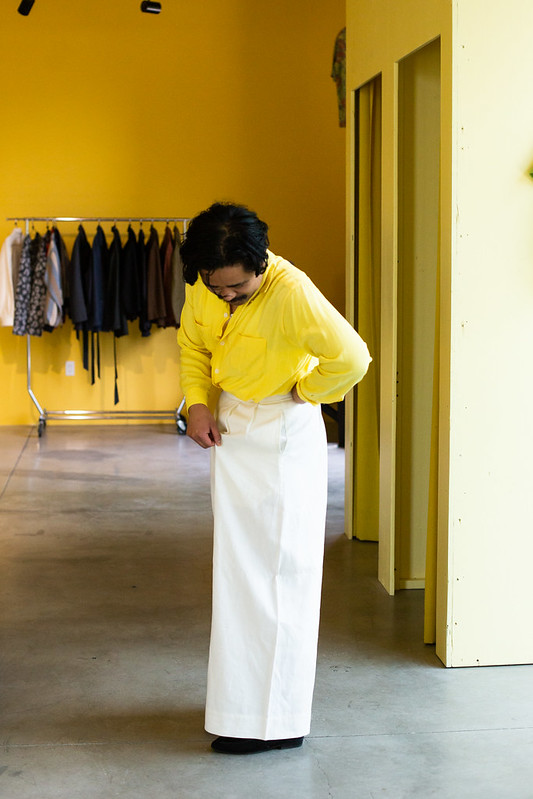
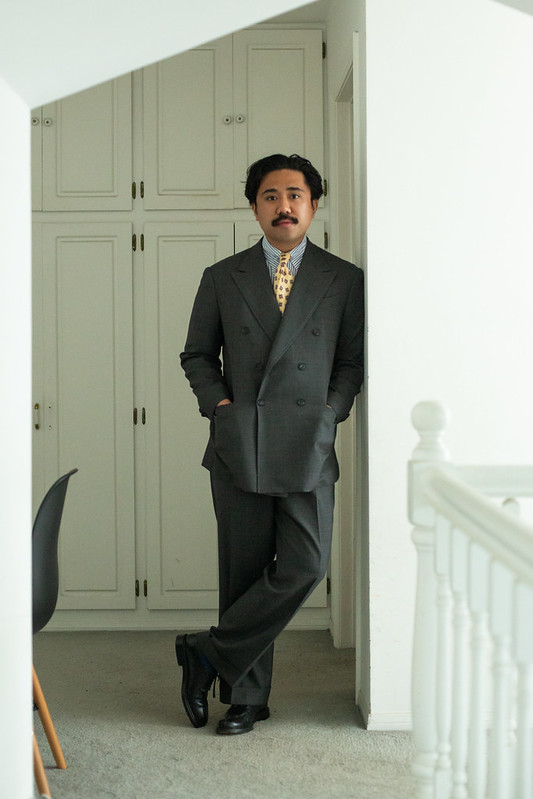

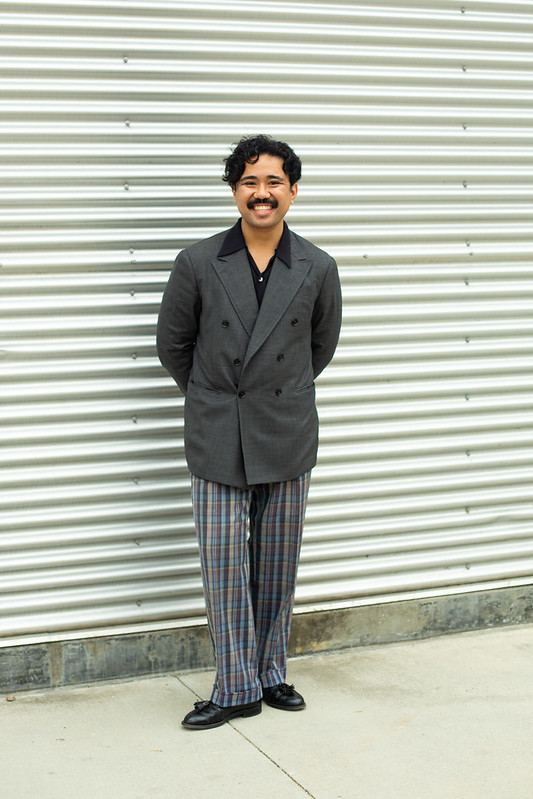
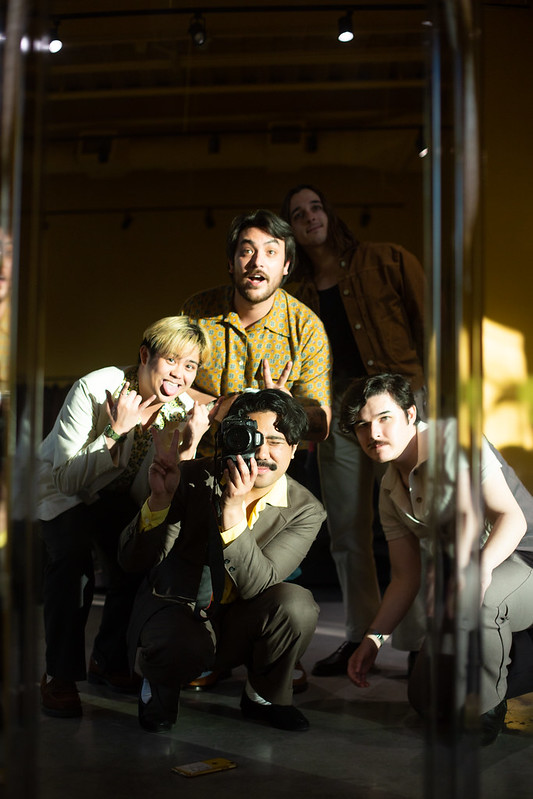

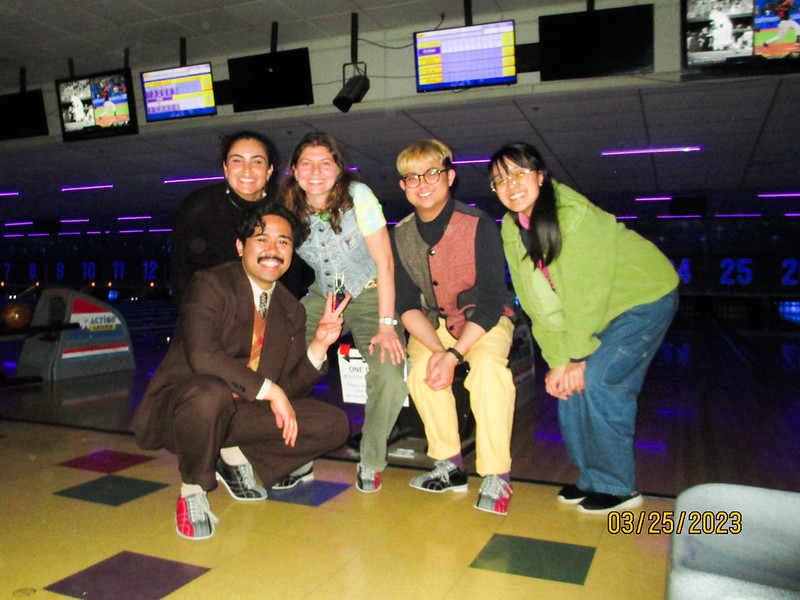


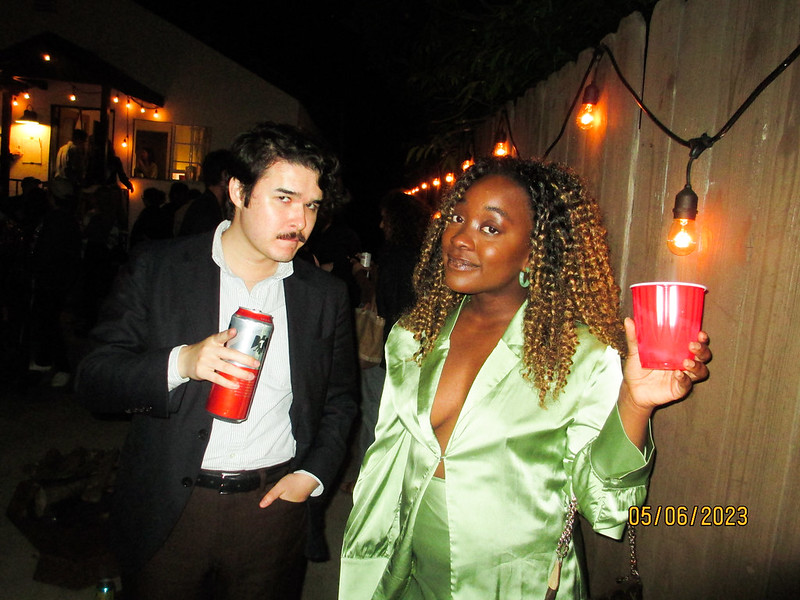


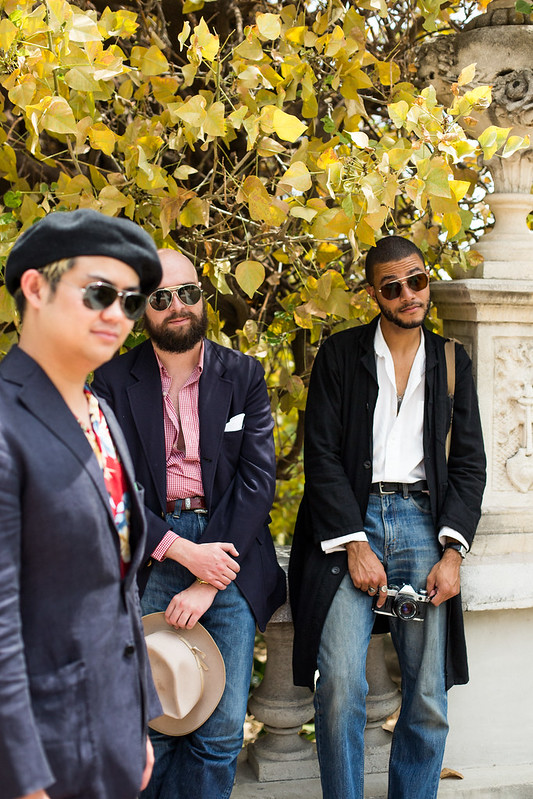



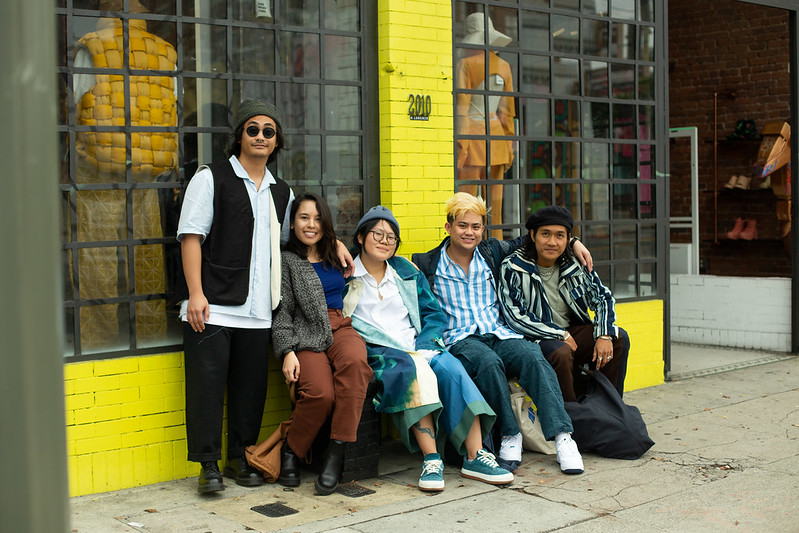

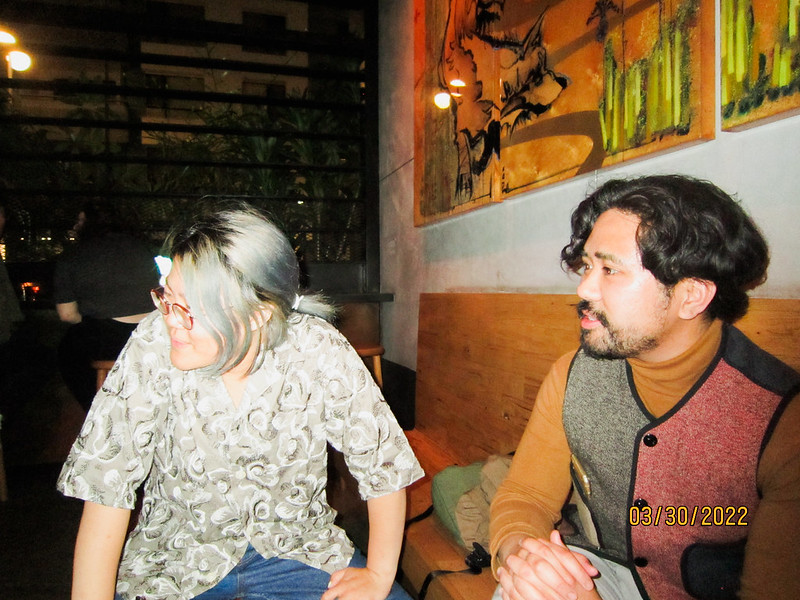




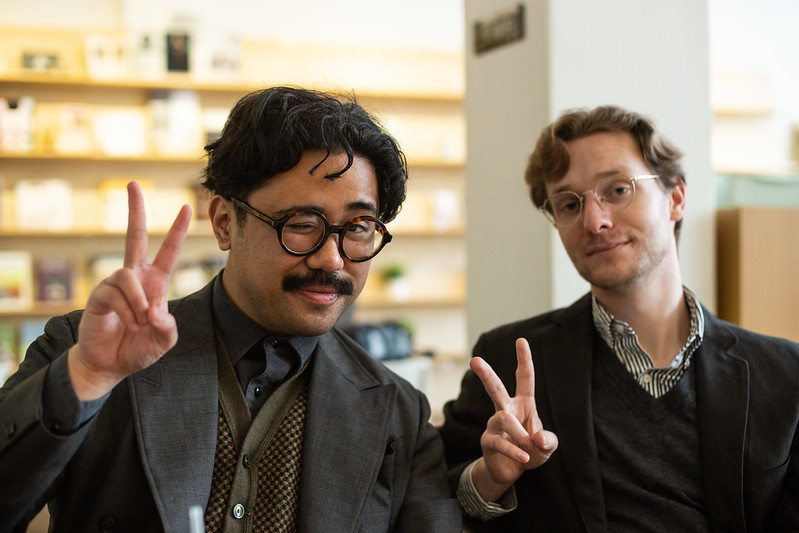
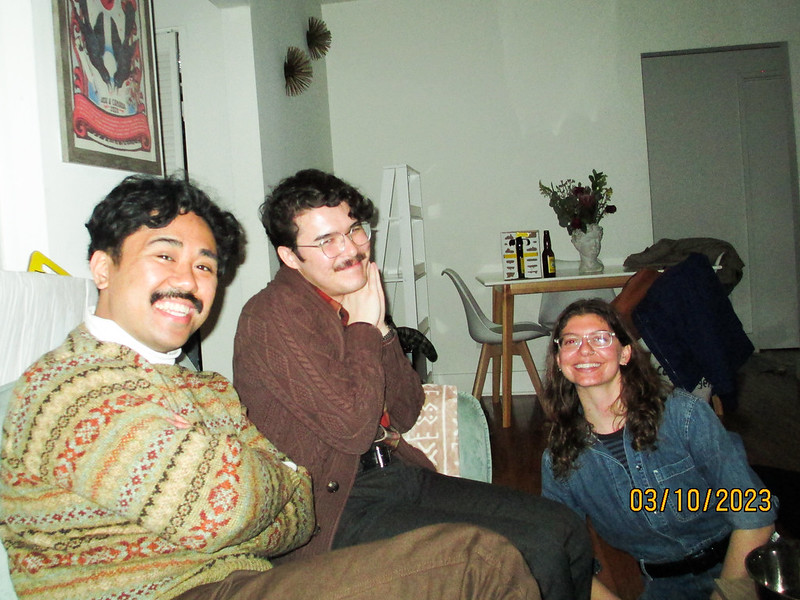
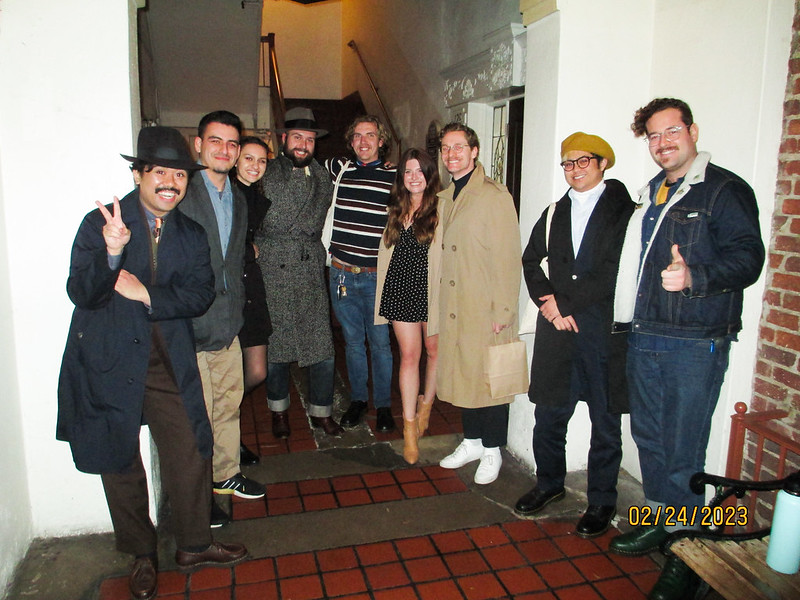
Thanks for linking to my old work, Ethan. I apologize for not being receptive to your perspective in the past. Though I wasn’t in a mental health space to have productive conversations about this a few years ago, it does make me happy that something I wrote still resonates for you with this topic, which is important. We’re all out here learning, and I’m glad you’re tackling these questions and bringing in texts from outside of menswear/fashion to inform the perspective you bring. I agree with you that fashion/menswear are unnecessarily siloed off from other forms of expression (even from women’s fashion), and I think that the work you’re doing is commendable for trying to reduce that gap.
LikeLike
Hi Jonathan!
I hope all is well!
This is probably not the best space for this, but thank you for responding! It goes without saying that I definitely regret what happened in the past. I think it would’ve been so great if we had gotten to this stage together (not to say we still can’t!) because it is true that your criticisms of me, as well as #menswear as a whole, have DEFINITELY had a profound and POSITIVE effect on my writing ever since then.
I see all of this as a going journey and at this point, I can’t imagine NOT supplementing my menswear thoughts with non-menswear fashion content as well as other texts overall. It’s definitely a new approach for me but one that I think adds even more to what I consider to be a holistic hobby.
Thank you again for your kind words. I want to make it clear that I don’t think I would’ve had the confidence to share these thoughts without you setting the stage those years ago. Critiquing menswear and its culture should be out there, not just in our DMs!
LikeLike
Booo the fact you advocate for high street fashion. Also booo for adding in the kooky fashion YouTubers
LikeLike
This kind of over-intellectualization won’t hold back the evil forces of casualization.
Better to be exemplary in one’s personal excellence. Engaging with the empty bag of post-modernism is a great way to lose the remnants of one’s vitality.
LikeLike
I really enjoyed this article. For me, I’ve gotten to the point where I generally know what I like, I dress to please myself, and I don’t get too worked up about it much anymore. But in getting to that place, it becomes too easy to take certain things for granted and to forget about (or totally disregard) context. Broadly, it’s that if we’ve stopped asking questions, perhaps we’ve lost ourselves. Why do I like what I like, what does it say about me, how does it make me feel, are there ethical issues to consider, and can I enjoy wearing things that are associated with backgrounds that are not my own? This is maybe why I keep coming back to your site: You ask questions like these all the time, and your style is both classic and eclectic enough to merit continued inquiry. Thanks for keeping it interesting, and for keeping us all more on our toes.
LikeLike
Thank you Nevada! It’s been interesting to be introspective over the years and trace my thought processes, inspirations, and the source of confidence as well as hesitation.
I’m glad that you found the article useful! Thank you fo reading!!
LikeLike